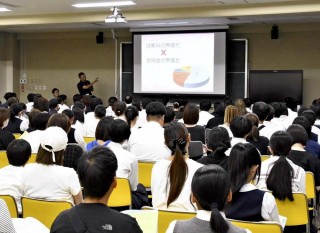▼ Japan Experts Fear Impact of Free High School Tuition; Will Public Schools Be Shunned In Favor of Private Education?
- Category:Other
Attending a private high school will effectively be free for all students from next April, as the income limit to receive government support for tuition payments will be eliminated.
The government’s policy for tuition-free high school is meant to provide fair educational opportunities by reducing the financial burden on families.
However, private high schools may become more popular as a result of this change, and there are fears that this will trigger a decline in public institutions.
This could lead to a less diverse educational environment.
Private schools as an option
Since April 2025, a subsidy of ¥118,800 for high school tuition has been granted per student, regardless of whether the school is public or private or the family’s economic situation.
Households that include students at a private high school and that have an annual income below ¥5.9 million can receive up to ¥396,000.
However, from April 2026, the income requirement will be abolished, and the payment ceiling will be uniformly raised to ¥457,000 a year — equivalent to the national average for private high school tuition — effectively making tuition free.
Furthermore, eligibility for a supplemental scholarship fund that covers such expenses as textbooks and school trips will expand from households that receive welfare to include middle-income families as well.
Parents of private high school students and exam candidates have welcomed this de facto elimination of tuition.
“This should attract students who previously gave up on private high schools due to tuition costs,” said Futoshi Nakajima, the principal of Abiko Nikaido High School, whose annual tuition is about ¥360,000.
The policy delighted a 42-year-old woman who was attending the school’s admission information session for third-year junior high school students in October. “We can now consider private high schools as an option,” the woman said.
Competition for students
Private high schools are likely to gain popularity for their well-equipped facilities and strong focus on supporting students’ efforts to prepare for university.
Public high schools are already losing popularity in municipalities that supplement the national tuition assistance with their own grant programs.
Osaka Prefecture, for example, has taken the lead in implementing de facto tuition-free education, starting a phased tuition subsidy program in fiscal 2024 without restrictions based on family income. The maximum subsidy is ¥630,000 per year.
This spring, the application-to-seat ratio for Osaka prefectural high schools fell to a record low of 1.02, with 79 out of 142 schools failing to meet their enrollment quotas in the general entrance exams.
Tokyo has supported private high school students with up to ¥484,000 annually since April 2024. Nearly 40% of Tokyo-run high schools fell short of their enrollment targets in this spring’s entrance exams.
Some private high schools in Tokyo have expanded their school bus routes to attract more students living outside Tokyo. As the de facto tuition-free policy spreads nationwide, competition for students is likely to intensify, particularly in urban areas with many private high schools.
“Not only top-performing students but also mid-level applicants will choose private high schools with better educational environments and university placement records from among schools in the same standard score range,” said the head of the education information department at Kawaijuku Shingaku Kenkyusha.
The Education, Culture, Sports, Science and Technology Ministry is concerned about a possible decline in public industrial and agricultural high schools, which cultivate talent essential for regional industries.
The ministry plans to formulate a comprehensive strategy within this academic year to enhance the appeal of public high schools. It will also require prefectures to establish and implement high school reform plans tailored to their local circumstances.
Economic disparities
The goal of tuition-free education is to create an environment in which children can attend the school of their choice, regardless of their parents’ economic status.
However, the expanded support from April 2026 significantly benefits high-income households: The grant will increase by about ¥60,000 for households with an annual income below ¥5.9 million, but by more than ¥330,000 for households earning ¥5.9 million or more.
Households with higher incomes can funnel the saved fees to such educational expenses as cram schools. Some have said the pattern in which economic disparities among parents translate into differences in children’s academic performance remains unresolved.
University of Tokyo Prof. Kan Suzuki, who specializes in educational policy, said the effectiveness of the policy needs to be checked after it is introduced.
“We should determine whether this policy is helping improve the quality of education, or if closures of nearby public high schools are making it difficult for a number of students to commute. The policy then must be improved to be more balanced.”
- 17/11 20:19
- Comment (0)
- Trackback(0)


